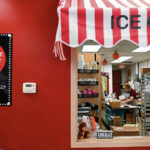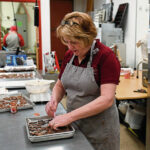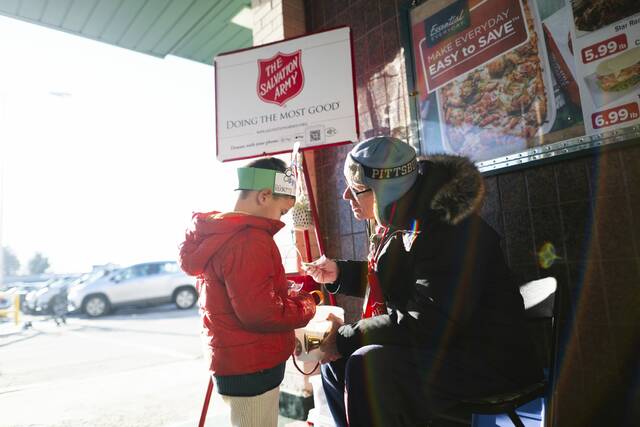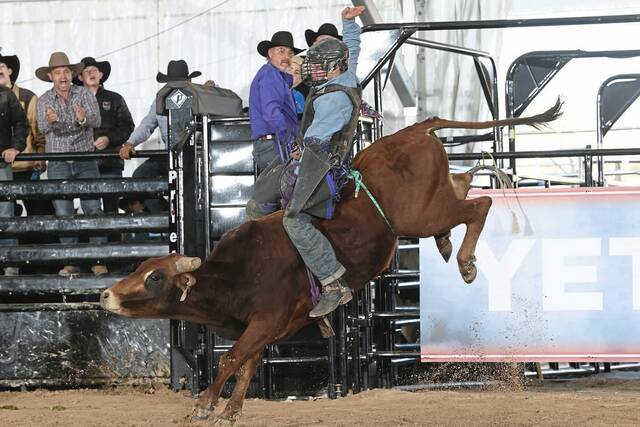As Joe Dastolfo was buying a box of chocolates for his wife’s Valentine’s Day gift, he didn’t consider the price.
The Hempfield resident was shopping this week at McFeely’s Gourmet Chocolate in downtown Greensburg.
“I don’t care about the price,” he said.
For those who do care, the wholesale price of a pound of chocolate is more than the average price of a gallon of gas in the Pittsburgh region.
Last week, gas averaged $3.42 per gallon in the region. Wholesale chocolate prices are about $3.65 per pound, 95 cents more than it was a year ago, said Robert Kane, owner of Wilson Candy Co.
Wilson, which has stores in Jeannette and Hempfield, tries to keep its prices as low as possible, around $27 per pound retail, just $1 higher than last year, Kane said.
Business for this Valentine’s Day, which is their busiest time of the year behind Easter and Christmas, has been good, but not like 15 years ago, when people were lined up to get into the store, Kane said.
Marion McFeely, owner of eponymous chocolate stores in Greensburg and Irwin, also has noticed the increased costs of doing business.
She typically buys chocolate in quantities of 25 pounds or 50 pounds and noticed a price increase after the covid pandemic and related shutdowns began in March 2020. It’s kept increasing.
“It got really expensive,” McFeely said. “It went up at least $30 in price” since the onset of covid, including a few dollars higher more this year than last.
For McFeely, the retail price of a pound of chocolate in the store is at $32, about $2 higher than a year ago.
“Hopefully, it is enough to cover the cost,” McFeely said. “I sell it with my heart” as one who has “had a love of chocolate.”
She feels caught between needing to raise prices to cover the cost of business and the supplies for the chocolate-covered products she makes — such as pretzels, potato chips, bacon, strawberries and Oreo cookies — and keeping the prices reasonable in the challenging economic times.
“It just snowballs,” said McFeely, who has operated the store for 6½ years after leaving a career in health care.
She worries the higher prices will affect business.
“Are they going to feed their family or buy chocolate,” she asked.
But, it’s a little different when it comes to Valentine’s Day. Orders for chocolate-covered strawberries have been good, as well as gummie bears.
“We’re the clean-up crew for all the men who forget to get a (Valentine’s Day) gift” and come in for a box of chocolate, McFeely said.
Cocoa crop down
The reason for the price hike can be blamed on a host of factors, almost all of which are outside of the control of the local confectioner.
The price of cocoa — the main ingredient in chocolate — is nearly 65% higher than a year ago, resulting in consumers paying more for chocolate products as confection manufacturers raise their prices, according to a research brief from CoBank. The Denver-based bank is part of a network of banks and lenders that help finance the agriculture industry.
The decline in the cocoa bean crop was a major contributor to the price hike. The International Cocoa Organization said excessive rains late last year hurt the crop and black pod disease hampered production, as did floods that delayed the mid-crop harvest. Most cocoa is grown in Africa and the majority comes from the West African nations of Ghana and Côte d’Ivoire, said the IOC, an intergovernmental agency of 52 nations that consist of importers and exporters of cocoa.
The bad news is that cocoa prices are likely to remain elevated until a new crop comes to market in late 2024, according to CoBank’s Knowledge Exchange. Consequently, additional price hikes for chocolate confections throughout the year are likely, and CoBank predicts that any rebound in consumers buying chocolate is unlikely.
To hedge against future price hikes, a chocolate producer with $5,140 to spare now could lock up the price of a metric ton of chocolate — 2,200 pounds — on the New York futures market for delivery in June, based on the International Cocoa Organization’s Feb. 9 price for future purchases.
Another key ingredient, sugar, has risen in price as well. Sugar prices have increased by more than 5% this year, according to the U.S. Department of Agriculture.
A 50-pound bag of Domino sugar — a top brand — cost about $33 last year, Kane said. This year, it is jumped to $42 for the same quantity, he said.
And then there is the increase in the cost of getting products to those making the delicacies. Not only have the freight charges increased, but shippers are still tacking on a fuel surcharge they instituted during the pandemic when fuel prices skyrocketed, Kane said. Shipping charges can be as high as $190 for some products, he said.
As Kane walked around a stockroom filled with boxes of more than 100 varieties of chocolate specialities, he explained the simple rationale for being unable to pass along all of the increased cost of production. His bottom line is squeezed between the higher cost for ingredients and the necessity to remain competitive.
“You have to know your market,” Kane said.

























